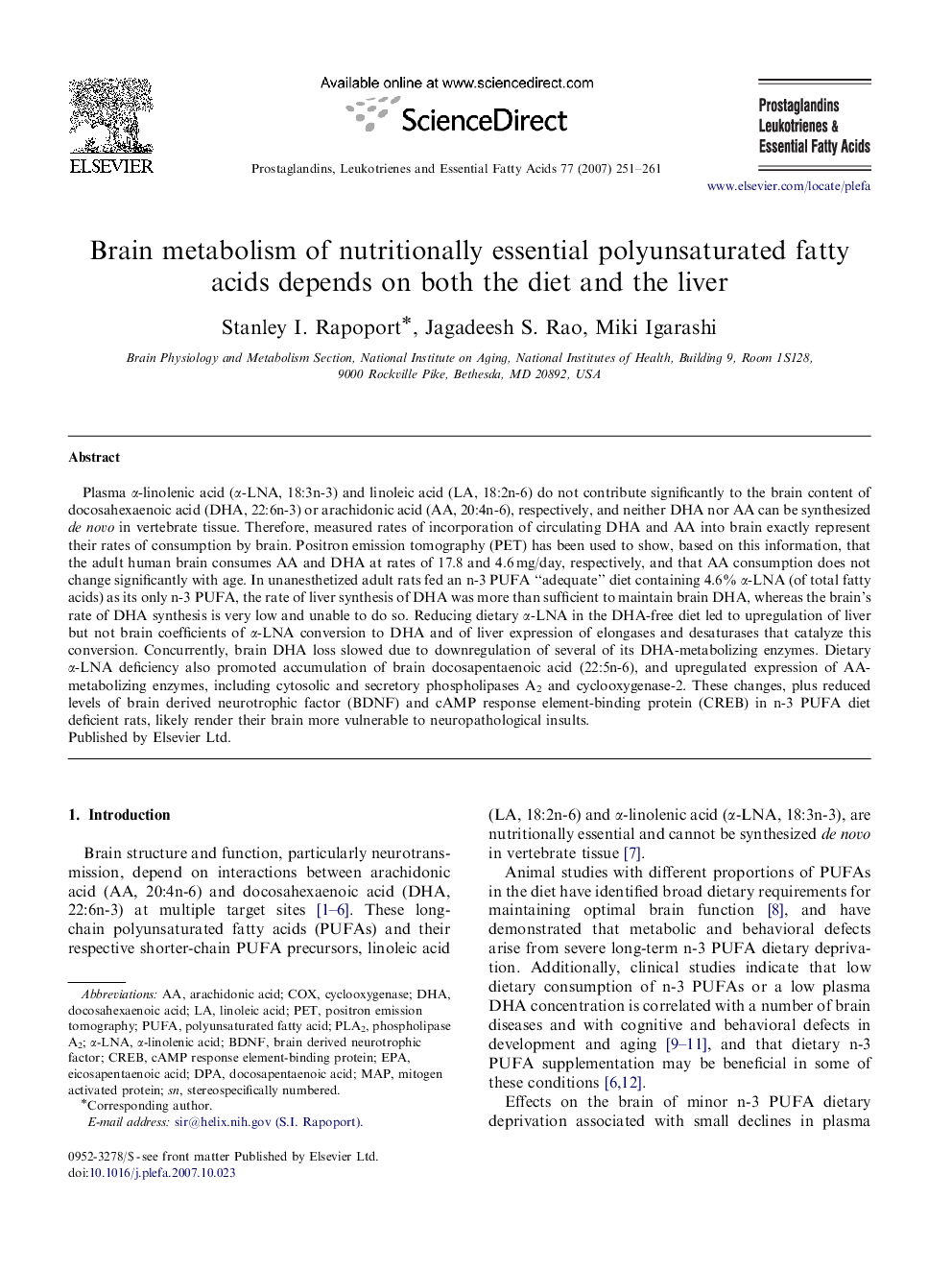| Article ID | Journal | Published Year | Pages | File Type |
|---|---|---|---|---|
| 2778319 | Prostaglandins, Leukotrienes and Essential Fatty Acids (PLEFA) | 2007 | 11 Pages |
Plasma α-linolenic acid (α-LNA, 18:3n-3) and linoleic acid (LA, 18:2n-6) do not contribute significantly to the brain content of docosahexaenoic acid (DHA, 22:6n-3) or arachidonic acid (AA, 20:4n-6), respectively, and neither DHA nor AA can be synthesized de novo in vertebrate tissue. Therefore, measured rates of incorporation of circulating DHA and AA into brain exactly represent their rates of consumption by brain. Positron emission tomography (PET) has been used to show, based on this information, that the adult human brain consumes AA and DHA at rates of 17.8 and 4.6 mg/day, respectively, and that AA consumption does not change significantly with age. In unanesthetized adult rats fed an n-3 PUFA “adequate” diet containing 4.6% α-LNA (of total fatty acids) as its only n-3 PUFA, the rate of liver synthesis of DHA was more than sufficient to maintain brain DHA, whereas the brain's rate of DHA synthesis is very low and unable to do so. Reducing dietary α-LNA in the DHA-free diet led to upregulation of liver but not brain coefficients of α-LNA conversion to DHA and of liver expression of elongases and desaturases that catalyze this conversion. Concurrently, brain DHA loss slowed due to downregulation of several of its DHA-metabolizing enzymes. Dietary α-LNA deficiency also promoted accumulation of brain docosapentaenoic acid (22:5n-6), and upregulated expression of AA-metabolizing enzymes, including cytosolic and secretory phospholipases A2 and cyclooxygenase-2. These changes, plus reduced levels of brain derived neurotrophic factor (BDNF) and cAMP response element-binding protein (CREB) in n-3 PUFA diet deficient rats, likely render their brain more vulnerable to neuropathological insults.
